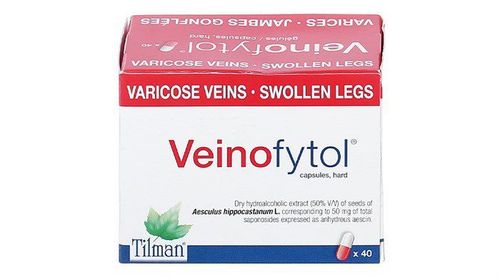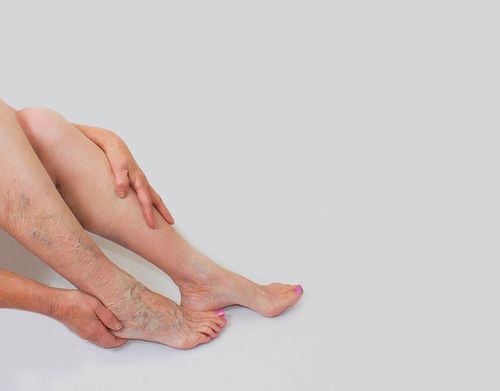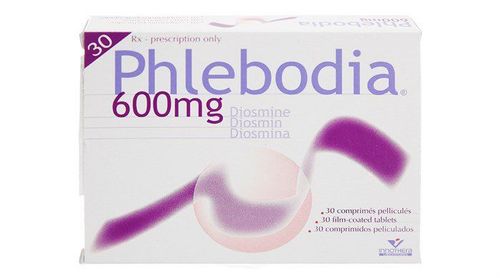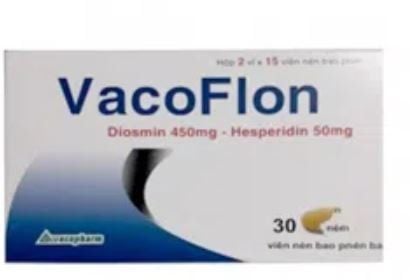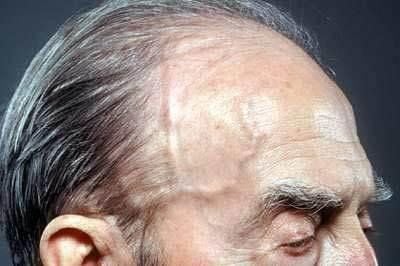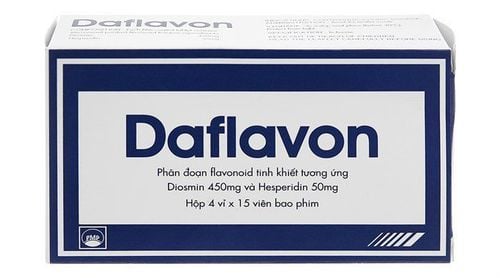This is an automatically translated article.
Arterial and venous problems are always potential health risks. How to control vein and artery problems? How do you know if you have a problem with your blood vessels?
1. Arterial and venous problems to watch out for
Arteries and veins are the organs that supply blood and link organs to the nervous system. The workload of this organ is quite large, they play an extremely important role in helping the body maintain health and ensure that the muscles are fully supplied with oxygen. Oxygen will be processed by the heart through a chemical reaction and then through the arteries and veins to all organs.
In the veins, there will not be much oxygen, so the veins mainly carry oxygen-poor blood to the heart for the heart to process. The oxygen-rich blood is then absorbed by the gas from the pulmonary artery. The oxygenated blood is then returned to the heart by the pulmonary veins to begin the next cycle.
2. Principle of blood clot formation
Thrombosis is a blood clot that blocks the flow of blood in the arteries and veins. This phenomenon occurs when the blood speed is slow to cause deposition, and over time, blood clots will appear. Analyzing the problem, the researcher has shown that blood oxygen levels have an effect on blood flow.
Therefore, the appearance of blood clots can be a sign of poor blood circulation, the blood is lacking in nutrients, especially oxygen. If not detected in time, the body will be affected causing fatigue and dizziness because both arteries and veins are at risk of blockage or narrowing of blood circulation.
3. Problems with the coronary arteries
Coronary artery disease can be caused by the body's presence of fatty deposits on the vessel walls. This condition, if prolonged, will affect the blood circulation section and make the heart work harder to ensure blood circulates throughout the body.
Plaque that narrows arteries and veins grows larger over time. When it reaches a certain size, the plaque can break off and then stay in the vein. In case the plaque breaks off and clings, it will be much more dangerous, making it more difficult for blood to circulate. That condition causes the heart to work too hard, leading to a heart attack or stroke.
4. Problems with Peripheral Artery
Blood flow to the extremities is due to the circulatory activity of the peripheral arteries. When this artery has problems, plaque will appear on the vessel wall. The level of danger and mechanism are quite similar to the problem in coronary arteries because both obstruct the blood circulation.
When the extremities receive enough nutrient-rich blood, muscle aches will appear. You may feel pain and lethargy when performing activities such as walking or climbing stairs. At the same time, problems in the peripheral arteries also increase the risk of heart failure and stroke.
5. Problems with the carotid artery
Carotid arteries are blood vessels that run along the side of our neck. The main function of the carotid artery is to maintain circulation to the neck and face. When the carotid artery has a build-up of plaque that narrows the blood flow, it will cause pain in the head and neck area because it does not receive enough blood.
Plaque in the carotid artery that accumulates for a long time is at risk of rupture and forming a thrombus. The thrombus can be pushed away by the blood stream or lodged in an artery. Even more dangerous is that blood clots can block blood flow to the brain and cause blockage of blood vessels in the brain leading to stroke.
6. Risk of cerebrovascular disease
The brain is the life-sustaining organ along with the heart. When the blood cannot carry oxygen to the brain, the activities will be interrupted. Therefore, the survival of cells depends on the beating heart and the command from the brain.
Cerebrovascular problems will reduce or obstruct blood qi. Stroke, or narrowing of arteries and veins, can lead to problems with blood vessels in the brain. When an artery is weakened, it causes an aneurysm. Abnormal blood vessels need attention to control the health condition when necessary.
7. Weak veins
Varicose veins may present with thickened, twisted, or blue raised vessels in the legs. This is a warning sign of varicose veins. This condition occurs when blood is prevented from returning to the heart. If the vein is weak, it will not be able to be treated in time, leading to damage or blood flow.
This condition lasts for a long time, causing the hematoma to increase and the veins to emerge and twist. Skin problems can be seen with the naked eye. You need to note that and see a doctor if it appears for a long time with pain.
8. Spider web syndrome
Varicose veins that cause spider veins also present like spider webs, but the webs are usually thinner. This phenomenon will often appear to indicate vein problems. The small raised blood vessels will be usually green, sometimes red.
If there are many spider veins on the skin, it may be caused by injury or too long sun exposure. At the same time, the hormonal imbalance of menopausal women and during pregnancy also leads to spider webs.
9. Thrombosis
When a person is injured, the platelet cells will receive the signal and gather at the wound mouth to stop the bleeding. Damage to the blood vessels is covered by platelets, which can be thought of as a blood clot. However, those clots that stick to the vessel walls can cause dangerous damage, causing blockage and inflammation of the blood vessels.
Blood clots if not to stop the wound on the vessel wall will cause harm to the body. In addition to obstructing circulation, it also leads to an increased risk of heart failure and stroke. The most dangerous is when blood clots in the brain and heart.
10. Inflammation leads to varicose veins
Thrombophlebitis is when the body has swelling or irritation due to blood clots forming inside the veins. The cause of a blood clot can be after surgery or an injury or the body is not regularly active due to lying motionless for too long.
Thrombophlebitis forms at the surface of the skin or deep below. You can consult your doctor about blood thinners to limit the formation of blood clots that affect the speed of circulation.
11. Thrombosis located deep in the vein
Blood clots that form deep inside a vein, mainly in the legs, are deep vein thrombosis. If the patient has to lie down for a long time or sit on a vehicle for a long time, this problem will appear.
In fact, the body needs to stay active to catalyze blood circulation. If you sit for too long or do not move, it will lead to a decrease in blood flow causing blood clots. In mild cases, the blood will dissolve and be taken away, but unfortunately into the lungs, it will be dangerous to health.
12. Pulmonary artery and vein occlusion
Small broken blood clot will limit the obstruction to the circulation process. However, the risk of them reaching the lungs is often very high. The lungs or internal organs all need the support of nutrient-rich blood to function. Therefore, when the pulmonary artery and vein is blocked, it will lead to shortness of breath, chest pain. Even more dangerous is your life.
13. Chronic venous insufficiency
Blood vessels will go throughout the body and always move in rhythm to ensure that the whole body maintains the necessary blood volume. When veins are damaged or weakened, the body will stop bleeding or collect in the blood vessels. Blood clots affect the valve opening and closing, which will endanger the circulation process.
14. Aneurysm
Weakening of the vessel wall can cause the aneurysm to enlarge. Reaching the maximum threshold will lead to rupture of blood vessels. Blood has an important role, but when it flows out, it will be dangerous to internal organs. Because of artery and vein problems, people with recent injuries are at risk of developing an aneurysm.
15. Danger signs need to be reported to the doctor
Arteriovenous and venous problems always appear, if mild, they will gradually decrease, and if severe, they will last long, making it difficult to live. You need to pay attention to some of the following symptoms to promptly go to the hospital for examination:
Sudden shortness of breath Pain in the chest area Dizziness, dizziness, possible fainting Heart rate disturbances faster Severe pain in the head area Sadness Vomiting Blurred vision or duplicated objects Visual impairment in one or both eyes Muscle numbness especially in the facial muscles Difficulty communicating Psychological anxiety Convulsions Most arterial problems and veins are caused by blood clots. Therefore, you should choose foods containing healthy fats and exercise regularly to increase venous circulation, making it easier for blood to transport and function properly. If there are signs of a dangerous illness, you should go to a medical facility for early examination and treatment.
Follow Vinmec International General Hospital website to get more health, nutrition and beauty information to protect the health of yourself and your loved ones in your family.
Please dial HOTLINE for more information or register for an appointment HERE. Download MyVinmec app to make appointments faster and to manage your bookings easily.
Reference source; webmd.com



